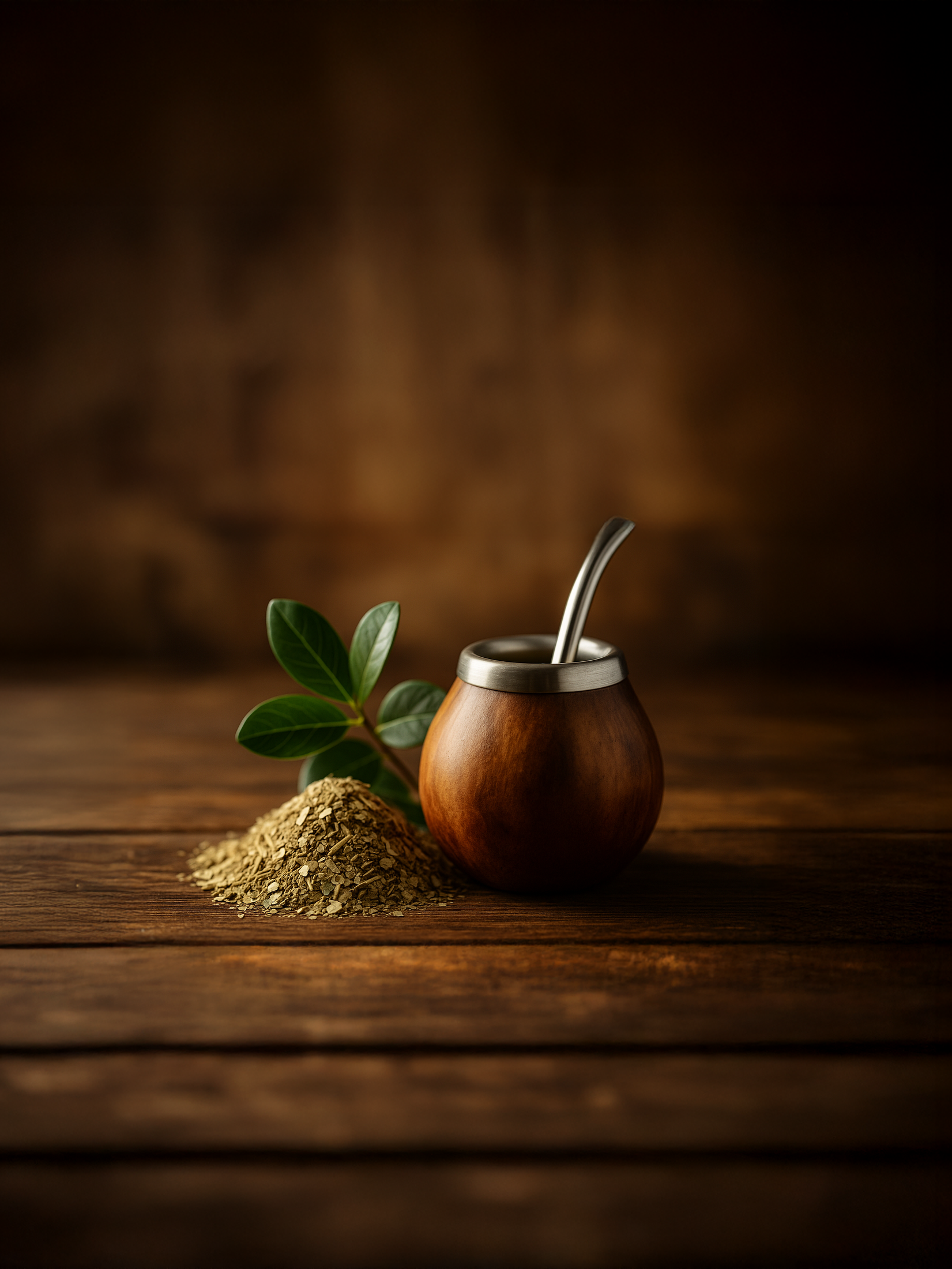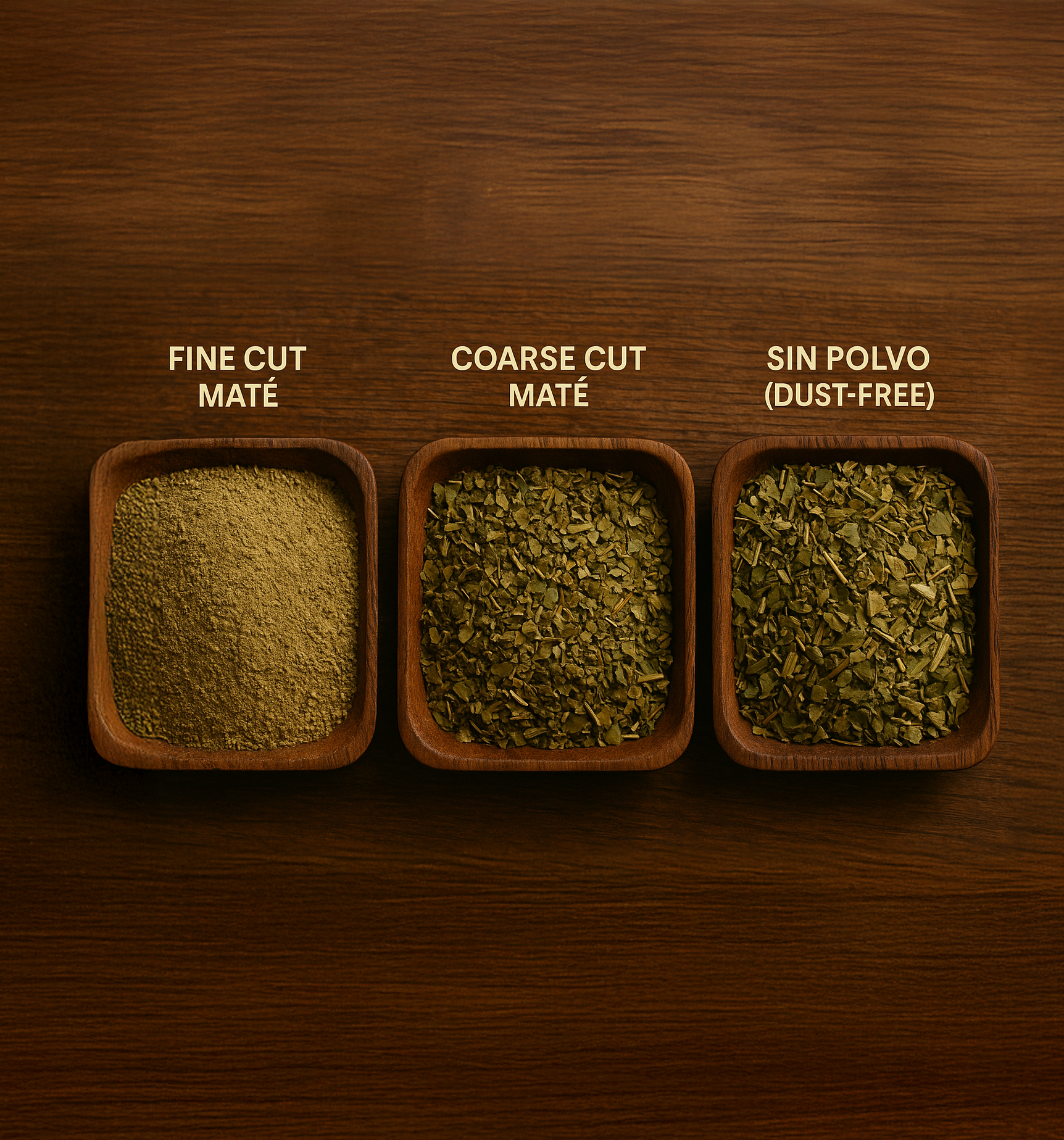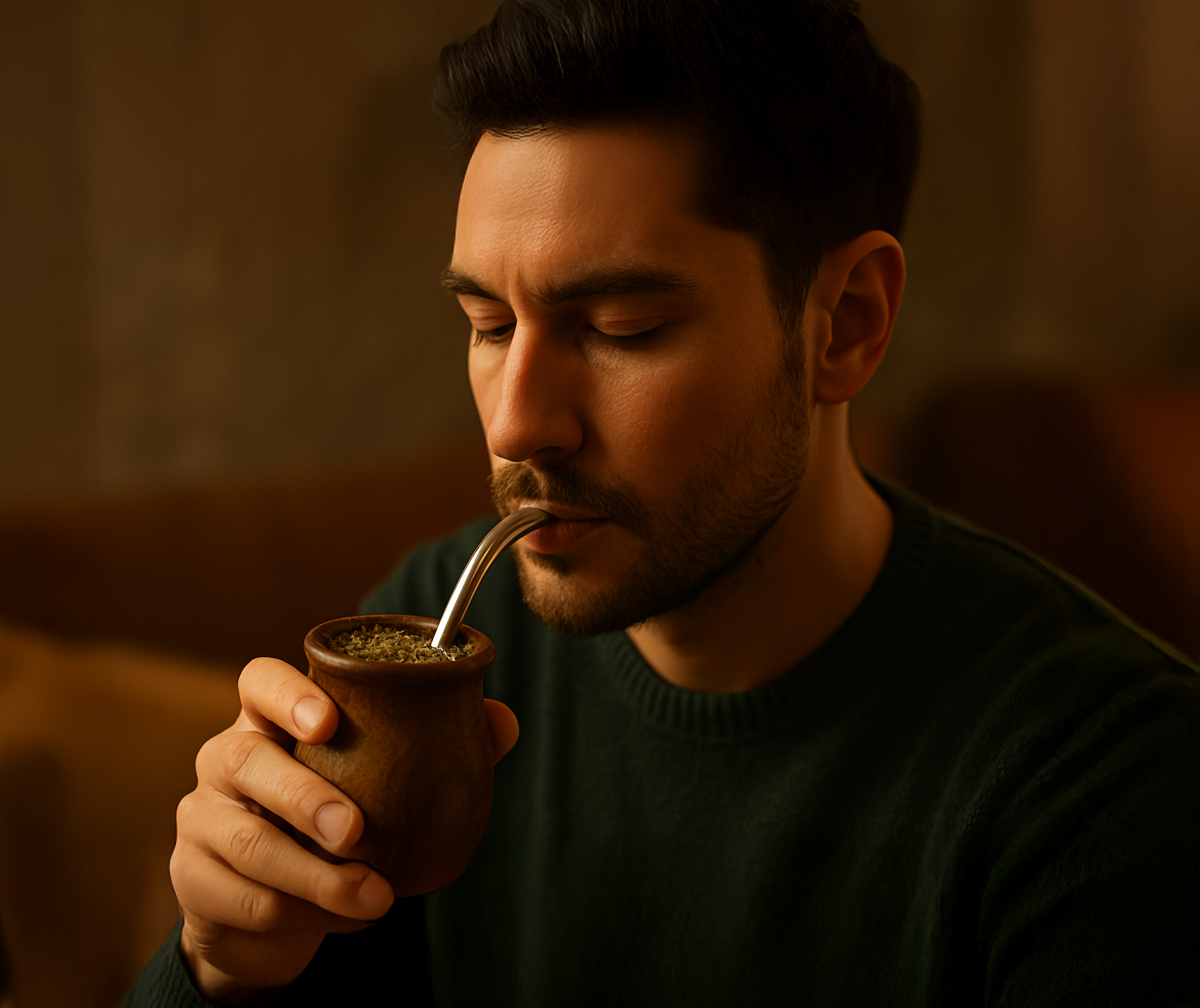Maté & Sustainability
Natural Components & Warnings

Main Ingredients:
- Dried and ground leaves of the Ilex paraguariensis plant
- No chemical additives or preservatives (when purchased in natural form)
For People with Sensitivities:
- Belongs to the woody plant family (similar to holly)
- Should be avoided by those with allergies to strong herbs or concentrated botanical substances
Does it contain caffeine?
Yes, maté contains caffeine, but it differs from coffee caffeine
In addition to caffeine, it also includes:
- Theobromine (also found in chocolate)
- Theophylline (also found in tea)
That’s why maté is considered a mild to moderate stimulant.
It provides focused energy without the jittery rush or crashes often caused by high doses of coffee caffeine.
Water Temperature in Maté Preparation
Temperature plays a crucial role in preparing maté.
As mentioned before, this is not a random process
It depends on a precise balance, which is an essential part of the ritual.
Ideal Water Temperature:
Between 70°C and 80°C
The water should never be boiled (i.e., not 100°C), because boiling:
- Destroys the natural flavor of the leaves
- Spoils the taste and intensifies the bitterness
- May damage the bombilla or the wooden cup
If you don’t have a thermometer, you can observe visual cues:
When small bubbles begin to appear around the edges, but the water hasn't yet boiled that’s usually the perfect moment.


What if You Add Milk Instead of Water?
It’s not common, but some people like to experiment with this variation.
If you want to try it, keep these things in mind:
The milk must be hot but not boiled
- Just like water: 70–75°C
- Boiling it ruins the flavor and creates an unpleasant film on top
Full-fat milk gives a rich texture, but might overpower the maté flavor
- Best to try in small amounts first
It's better to heat the milk separately
- Don’t mix it with water while heating
Cold milk doesn't work well
- It kills the essence of the drink warmth, focus, and balance
Types of Maté (By Cut)

Fine Cut Maté:
A finely ground powder that brews quickly and yields a strong taste, but tends to leave a lot of sediment in the cup.
Common in some Syrian brands.
Coarse Cut Maté:
Lightly crushed or chopped leaves, less bitter, cleaner in the cup,
but requires a longer brewing time. Preferred in traditional Latin preparation.
Sin Polvo (Dust-Free):
Maté without the fine powder found in traditional blends offers a cleaner, smoother taste.
Some varieties also include stems, which affect the flavor:
→ Fewer stems = stronger taste
Types of Cups (By Culture)
Wooden Cup (e.g., bomba wood or olive wood)
Common in Syria and Lebanon
Calabaza (hollowed gourd)
Popular in Argentina
Stainless Steel or Ceramic Cup
Modern, easy to clean, used in some cultures
Thermal Thermos with Spout
Essential with the cup to maintain water temperature accurately
Tools Used to Prepare Maté
Bombilla (metal straw):
Usually made of stainless steel or copper, with a small built-in filter at the bottom.
Additional Filter:
A small insert placed inside the cup or straw to reduce sediment.
Thermometer:
Used to keep the water precisely between 70–80°C.
Maté Bag:
A small pouch that holds the thermos, bombilla, and cup—commonly carried by maté lovers as part of their daily habit.


1. Effects of Maté on the Body:
- Enhances focus and alertness without causing sudden tension
- Has mild mood-lifting properties
- Acts as a diuretic (important for those with kidney issues)
2. Is It Addictive?
- Maté is not considered biologically addictive
- However, it can develop a strong emotional and social bond, similar to coffee or tea
- The act of drinking it becomes part of a shared experience or daily ritual
Tips for First-Time Drinkers
- Try it without sugar the first time to understand the real taste
- Use fewer leaves if the bitterness feels too strong
- Add mint or lemon to soften your first impression
- Don’t boil the water keep it at green tea temperature (~70–80°C)
Detailed Health Effects of Maté
| Observation | Effect |
|---|---|
| A mild stimulant—ideal before work or study | Energy |
| Improves alertness without the jittery anxiety often caused by coffee | Focus |
| Said to aid digestion when consumed after meals | Digestion |
| Creates a light, cozy warming effect in the body | Internal Warmth |
| Has diuretic properties—people with kidney issues should be cautious | Diuretic |
The Environmental or Sustainable Aspect
Maté is a
100% natural plant that requires no complex processing
The
wooden/gourd
cup and the metal
bombilla are reusable tools
Some people consider maté a
more eco-friendly drink compared to coffee
Quick Comparison with Similar Drinks
| Drink | Maté | Tea | Coffee |
|---|---|---|---|
| Caffeine | Moderate | Medium | High |
| Flavor | Herbal, slightly bitter | Light, aromatic | Strong, acidic |
| Setting | Social & spiritual | Solo or social | Often solo |
| Symbolism | Gathering & connection | Pause & relaxation | Start of the day |


